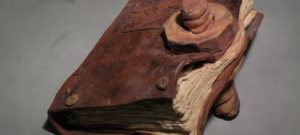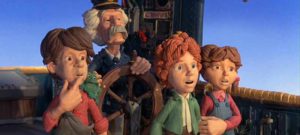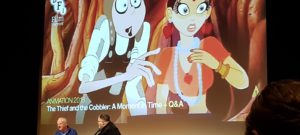The craft of animation is a fascinating topic. There are lots of different types of animation, and different ways to animate too. The craft of making something move in a way that suspends disbelief and draws emotion from the viewer is a craft that is shared by all forms of animation.
Different forms, or types of animation, are defined by the process of how they are made and the materials used in that process. The thing is that you can animate almost anything, and on top of that most films are made with a combination of techniques so it’s not always that easy to define an animated film in terms of its type of animation.
Analysis and technique
An analysis of animation, its theory, and how it works and can be used will help you to question the status quo and develop your ideas. For me, this is linked to understanding techniques as well. Theory and practice need to be linked for an improvement in animated films. So you can find a collection of posts that analyse animation and techniques used to make it in the ‘Analysis & technique‘ category tag.
There are also separate tags for looking more closely at the craft of different forms or types and animation. Choosing one that you are most interested in will give you a range of posts about that type of animation. For example, key animation artists and films, books, how-to guides, and so on. Look through the ‘Craft – …’ categories to find collections of posts that explore that type of animation.
Clay animation
This is a great way to get started with animation, and it’s very popular for both beginners and professionals. Clay is not only a medium for commercial productions, but it has always been a popular choice for independent filmmakers, artists, and beginners. Find the posts on clay animation here.
Did you know? Plasticine was actually developed at the turn of the last century to help children learn to read in the UK, it was developed to replace chalk tablets.

Books on clay animation – for animators
Read More

Clay Animation made easy – for kids and beginners
Read More
UK
The most successful studio for clay animation in the world today is Aardman Animations, established in the 1070’s and based in the UK. In Europe there has always been a rich history of puppets, and therefore puppet animation was far more visible and well developed, but this was not seen much in the US.
US
The Vinton Studios really pioneered clay animation in the 1970’s and by the 1990’s interesting artists like David Daniels and Joan Gratz worked at the Vinton studios making it the creative stop motion animation hub that it still is today. People outside the Hollywood sphere, had more independent and experimental work.

The claymation films of Will Vinton and his studio
Read More

Collectable Will Vinton – DVD and comic
Read More

A celebration of the life and work of Will Vinton
Read More
2D animation
2D animation includes drawn animation, cartoon animation, anime, and cutout animation. It can be made either by hand, using digital tools, or a combination of the two. For example, drawn on paper or drawn on a graphics tablet, made with software that will allow for digital ‘tweening’, using cutouts in a stop motion method or with software to move each moving part.
I have differentiated it from Motion Graphics where the objects will move but not transform to the degree of 2D animation. However the two are often used together, which can make it hard for the average viewer to tell them apart. The two terms are often confused by clients, hence there is plenty of confusion on the internet about what these two things actually are.
In the general category of 2D, you can see collections of posts on hand-drawn animation, as well as digital 2D animation.
Masters of 2D Hand Drawn Animation

Who Framed Roger Rabbit and Richard Williams
Read More

The Thief and the Cobbler – the greatest film never made?
Read More
Immersive
Immersive technologies offer a whole new dimension to making and experiencing animation. You’ve probably heard the terms VR, AR, 360 video and many more besides, but what do they all mean for animation? This collection of blogs will explore how immersive technology is being used today both for making animation and experiencing it.
